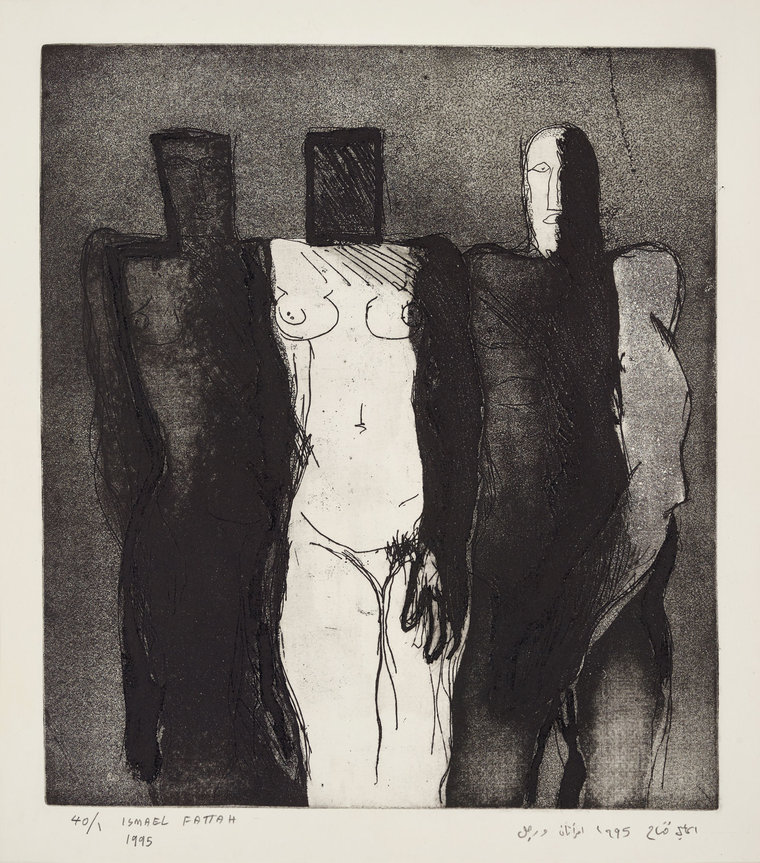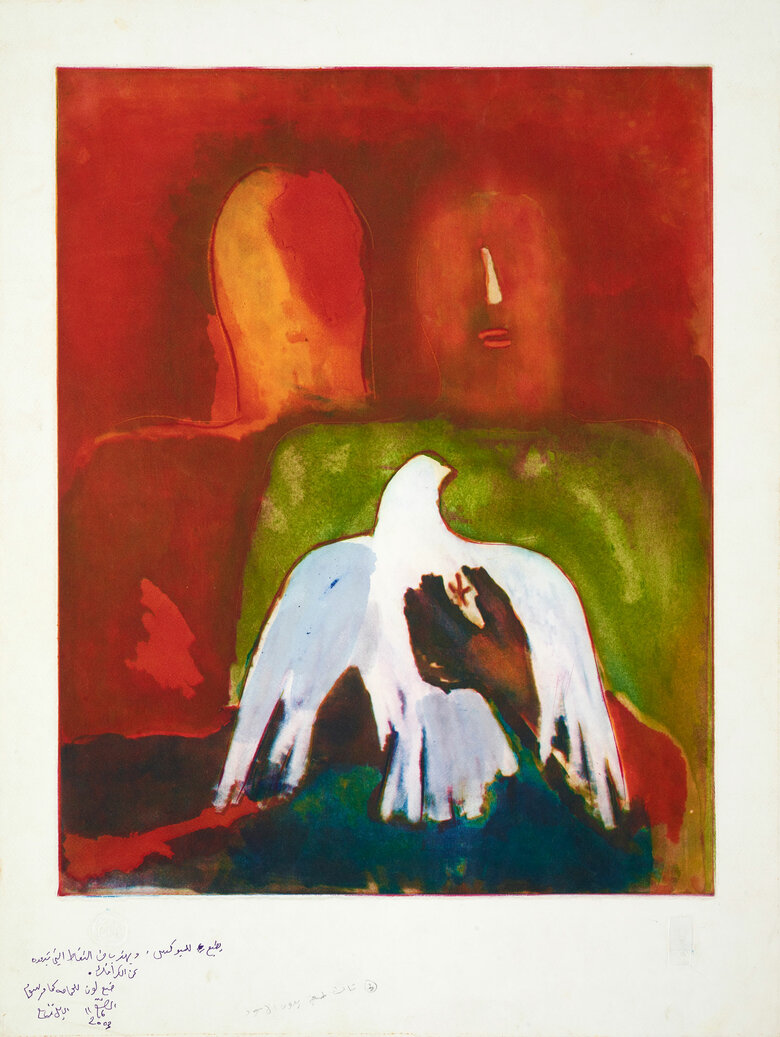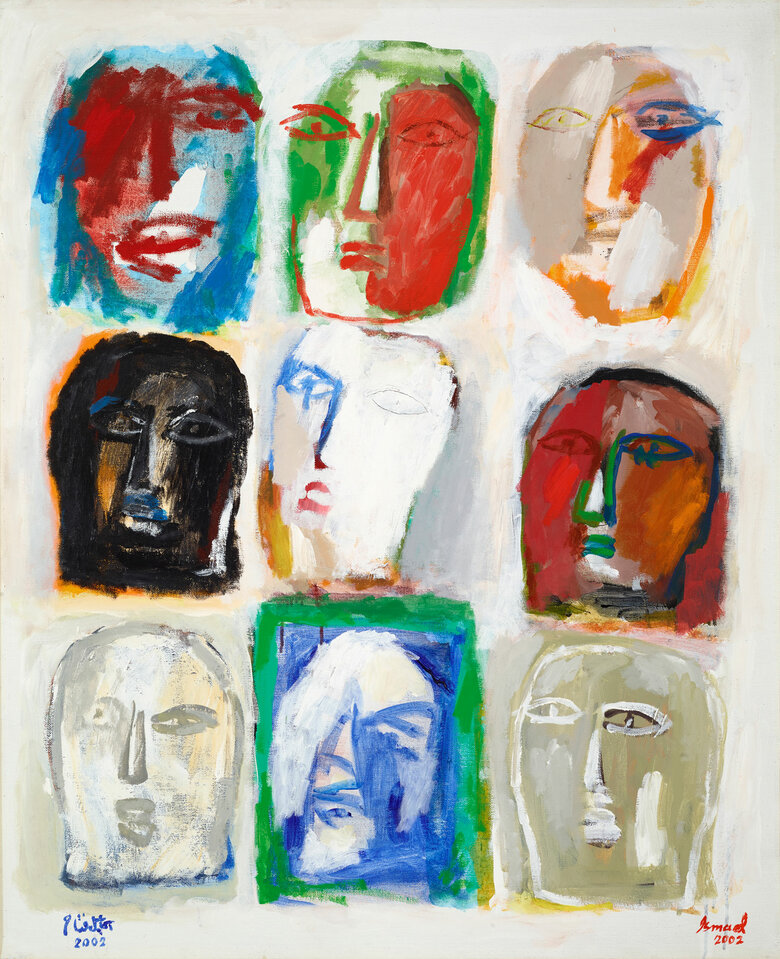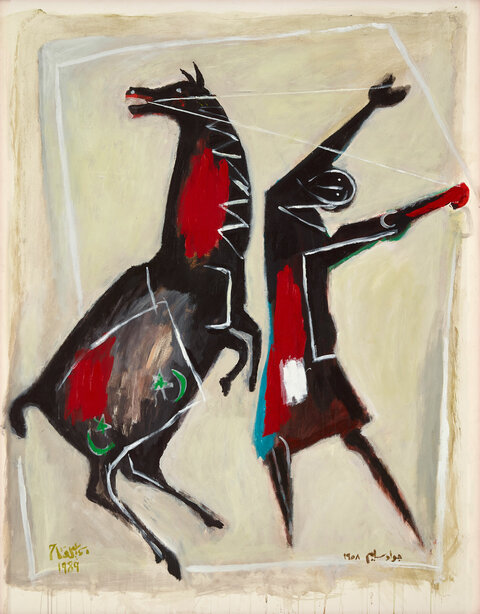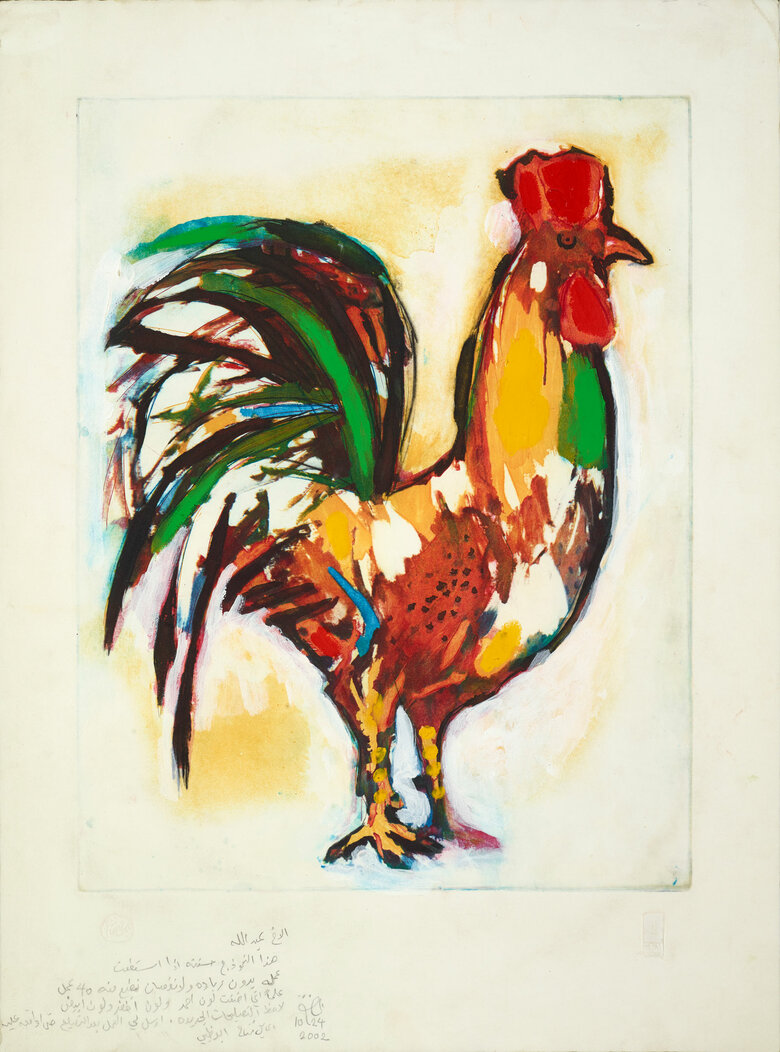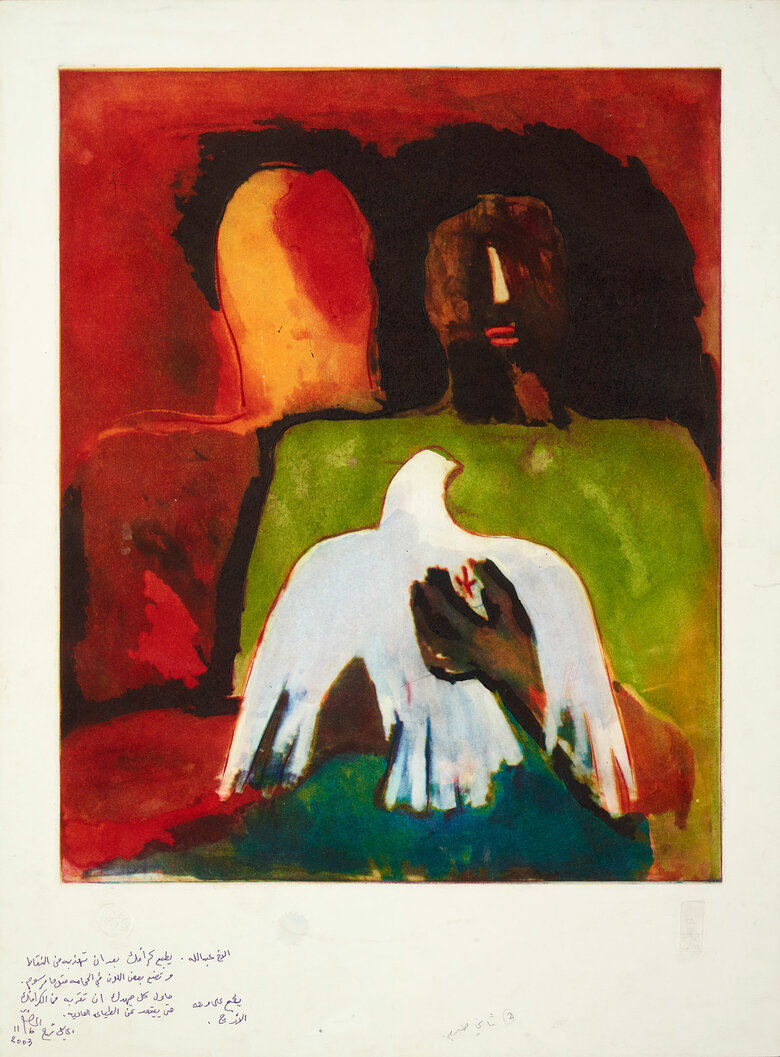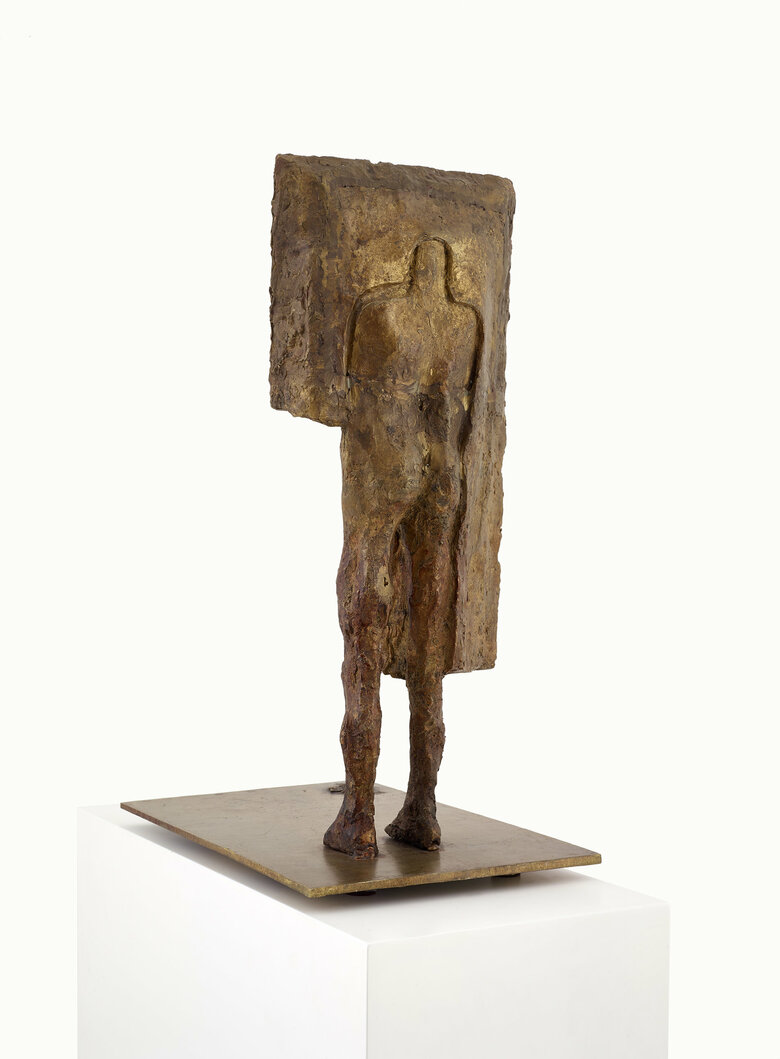Renowned as a sculptor and painter, Iraqi artist Ismael Fattah's creative output would shift in the last few years of his life when he produced dozens of etchings. These works still clearly connect to Fattah's overall style and themes. Fattah created simplified, reduced shapes and forms that embody human-like qualities as they interact with their environments. These characteristics are apparent in works such as إمرأتان و رجل or Two Women and a Man, 1995, drawing from Sumerian sculptures and statuettes. The artist addresses recurring themes of men and women and their sexual relations. Here, the figures are wholly or partly in shadows, their faces and bodies half hidden or obscured. Their sexuality seems to be a source of anxiety and fear.
Another recurrent symbol in Fattah’s work is the rooster, a macho symbol that recurs in many of his prints and paintings, underscoring its importance in his body of work. In his Untitled, 2002, the artist's approach to printmaking is made clear through his remarks on the retouched etching of the rooster, where he points out that 40 copies should be made. He also notes the changes he has made to the piece in terms of color.
A retouched etching is when the etched plate is further modified or enhanced by hand after the initial etching process. It is often done using engraving tools, drypoint needles, etc., to add finer details and textures or to correct elements of the original etching. Retouching is used to refine the image, enhance its depth, or adjust its tonal quality before printing. This shows how Fattah's approach to printmaking is very similar to his sculpting and painting process, as it carries the same artistic judgment when it comes to adding or removing layers.
Fattah’s use of retouching is most evident in the two works Untitled, 2003, which show different versions of the same print with the changes he included. In one work, the figures' faces are almost blended into the backdrop, with only their contours remaining and soft shadows that might suggest facial features. On the other hand, Fattah adds more distinct colors to the lips and nose of one figure and outlines them both with black around their heads, which then defines them as a man and a woman. There are also different levels of depth to the dove's color and the details of the figures themselves. As noted, printmaking allowed Fattah to produce multiple editions of his work, thus enabling him to experiment with different effects to achieve his vision.
Signed, dated with edition in English front lower right/ signed,dated, and titled in Arabic front lower left

